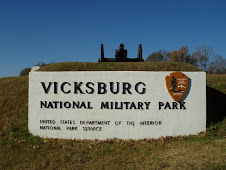On October 3, 2009, the Vick and Allied Families DNA Project had 43 members. That was a far better start than I expected. We will have a few more project members in the next week as we confirm that others also ordered kits.
Of the 43 project members, we know the Vick lines of 25 (12 project members are spouses or do not have a Vick line). Two other project members come from lines (Ezekiel Strickland and Barry Holland) which Y-DNA testing shows are very likely descended from Joseph. An additional two members may have an unproven Vick female ancestor. Further, two project members are descended from a Strickland line that does not share a Y-DNA signature with the Joseph Vick descendants. The Stricklands and the Vicks have many family connections.
Ten of this project’s members are also members of the VICK Y-DNA Surname Project, and they share Joseph’s Y-DNA signature. Having a confirmed Y-DNA match will be beneficial in making comparisons to closely related members (male and female).
We are using a company named 23andMe for our testing in this project since the company we use for our VICK Y-DNA Surname Project does not offer this type of testing. 23andMe has a new tool called “Relative Finder” that I am beta testing. Relative Finder will be very useful.
Relative Finder has two parts. The first part finds expected relatives in the 23andMe database. The second part allows you to send a share request to a match but you won't know the person's identity unless your share request is accepted.
At the moment I can see "matches" in the 23andMe database (although I don't have access to their identity unless they are already sharing with me). For each match Relative Finder shows me the number of shared segments and % of Shared DNA, as well as the mitochondrial haplogroup and Y haplogroup (for a male).
Relative Finder predicts the degree of relationship. I was surprised at how many matches I found using Relative Finder. I really didn’t expect many since I didn’t know of any cousin (at least one in a genealogical timeframe) who had tested at 23andMe and had results. Relative Finder puts matches in one of several buckets: “Parent or Child” (my mother, my son, and my daughter were there as I expected); “Sibling (my son and daughter show in that category on each other’s lists). Relative Finder has other buckets (like “Aunt/Uncle, Nephew or Niece;” and “Grandparent, Grandchild, or Half Sibling”) and various degrees of cousins. While Relative Finder gives the expected degree of cousin, e.g. second cousin, there is a window each could fall into, e.g. third to tenth cousin. Relative Finder found I matched what appeared to be two fourth cousins, one fifth cousin, two sixth cousins, two seventh cousins, and 224 “distant cousins.”
I hadn’t noticed that one of the “distant” cousins and I had a common stretch of DNA even though we were already sharing. When you share with a lot of people, it can be hard to keep up with those that get their results after they ask to share. You can then miss the fact that they match. Relative Finder is a nice tool for checking periodically for this situation and for getting an idea of how closely related you are.
Finding these distant cousin matches could be helpful in determining the birth surname of some of the females in our pedigrees (unfortunately, we don’t know many females birth surnames, especially if they were born before the 1850 census). While Relative Finder may be helpful in tracing these female lines, it will be a lot of work for both parties to try to figure out who they inherited their common data stretch from.
Since not everyone who tested at 23andMe is interested in ancestry, some of the unexpected matches may not want to share. Some of these matches probably tested for health risk information and not to find relatives. Still, we might find a few people who are interested in sharing even if it isn’t their primary reason for testing at 23andMe.
For my mother Relative Finder found one “Parent or Child” (me); two “Grandparent, Grandchild or Half Sibling (my son and daughter); one third cousins, five fourth cousins, four fifth cousins, and 201 “Distant Cousins.”
Unlike with our Y-DNA project where it doesn't make much sense to test two closely related men, I can see from the Relative Finder beta results that testing even full siblings will be beneficial. Siblings can have some very different matches. While my son and daughter have five shared matches, my son has eight matches that my daughter doesn't have. My daughter has six matches that my son doesn't have. I haven't tried to sort out the "distant cousin" matches, but I bet I would find the same story. It is possible some of the differences might turn up in the "distant cousin" category.
In the next three weeks we should begin to have results. We will then get a better idea of how our project is progressing.
Subscribe to:
Post Comments (Atom)




No comments:
Post a Comment